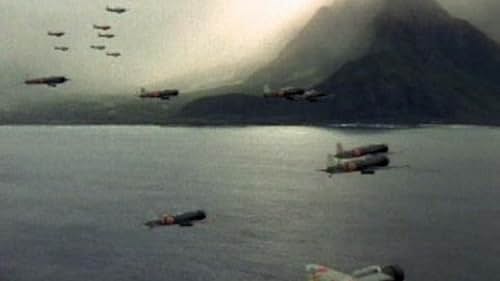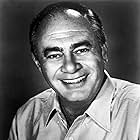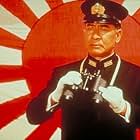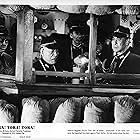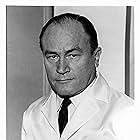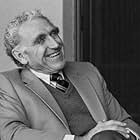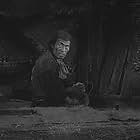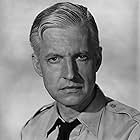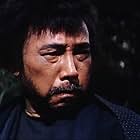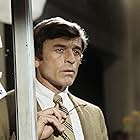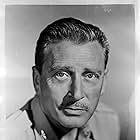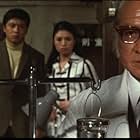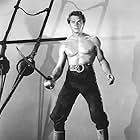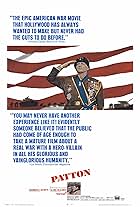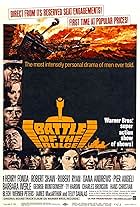Il Giappone, alleato della Germania nazista, si prepara ad allargare il conflitto bellico anche negli Usa, Ma gli americani sottovalutano il pericolo e l'aviazione giapponese attacca la base... Leggi tuttoIl Giappone, alleato della Germania nazista, si prepara ad allargare il conflitto bellico anche negli Usa, Ma gli americani sottovalutano il pericolo e l'aviazione giapponese attacca la base di Pearl Harbor distruggendo la flotta statunitense.Il Giappone, alleato della Germania nazista, si prepara ad allargare il conflitto bellico anche negli Usa, Ma gli americani sottovalutano il pericolo e l'aviazione giapponese attacca la base di Pearl Harbor distruggendo la flotta statunitense.
- Vincitore di 1 Oscar
- 2 vittorie e 7 candidature totali
- Admiral Chuici Nagumo
- (as Eijiro Tono)
Trama
Lo sapevi?
- QuizThe previous war epic by Darryl F. Zanuck, Il giorno più lungo (1962) was an extreme success. As stated by his son, producer Richard D. Zanuck, this was because it was about victory. He noted in contrast that Tora! Tora! Tora! is about defeat. Although the film made a great deal of money, it did nowhere near as well as The Longest Day. In Japan, however, the film was a smash. For the Japanese audience, it not only depicted a battle victory (after twenty-five years of films depicting defeat) but it also put the attack on more understandable footing; identifying not only the villains but also the motivation of those who believed that their actions were honorable.
- BlooperAs the bombers fly toward Pearl Harbor, they pass over the white cross at Scofield Barracks (Kolekole Pass) that was erected in memory of the people killed in the raid.
- Citazioni
[last lines]
Admiral Isoroku Yamamoto: I had intended to deal a fatal blow to the American fleet by attacking Pearl Harbor immediately after Japan's official declaration of war. But according to the American radio, Pearl Harbor was attacked 55 minutes before our ultimatum was delivered in Washington. I can't imagine anything that would infuriate the Americans more. II fear all we have done is to awaken a sleeping giant and fill him with a terrible resolve.
- Curiosità sui creditiFor the U.S. version of the film, the next to last of the main credits reads "Japanese Sequences Directed by Toshio Masuda Kinji Fukasaku" and the last credit reads, "Directed by Richard Fleischer." For the Japanese version of the film, the next to last credit reads, "American Sequences Directed by Richard Fleischer" and the final credit reads, "Directed by Toshio Masuda Kinji Fukasaku."
- Versioni alternativeThe original release included a line by Admiral Halsey (James Whitmore) saying that after the war, Japanese will only be spoken in Hell. This line is removed from later releases.
- ConnessioniEdited into La battaglia di Midway (1976)
I remember the survivors talking about how accuratly the attack was presented. They also talked about some of the inaccuracies (mostly uniforms and aircraft) but overall they thought it was great. Many grown men cried as they remembered fallen comrads.
I'm still impressed with the special effects. Several postings have complained about how "fake the backgrouds" looked. I've been to Pearl Harbor and the movie was actually filmed there.
There have been comments about the lack of suffering shown. Even if it had been filmed the studio would not have released it. Combat footage from World War II is shown on the History Channel today couldn't been shown in the theaters or TV when I was growing up (the 50's). It was considered too graphic for public consumption!
FOX had to build the full-sized battleships that you saw in the movie. They weren't computer generated images (CGI). Actually, they only built one that stood in for all the other battleships. There wouldn't be another massive shipboard set built along that scale until James Cameron's "Titanic".
The models of the ships (both U.S. and Japanese) built were also done on a large scale.
They had to assemble a fleet of flying Japanese aircraft (they modified existing surplus U.S. Navy and Air Force trainers) and rent real B-17s and P-40s. Those planes you see up there on the screen are real. Many of those "Japanse" aircraft are still flying and can be seen at Air Shows across the nation.
Whereever possible, the exact locations of the attack were used. In at lease one case, a hanger that was scheduled for demolition was destroyed in the filming of the movie.
It's much better than "Pearl Harbor".
I più visti
Dettagli
- Data di uscita
- Paesi di origine
- Lingue
- Celebre anche come
- Die Schlacht, die die Welt in Brand setzte
- Luoghi delle riprese
- Aziende produttrici
- Vedi altri crediti dell’azienda su IMDbPro
Botteghino
- Budget
- 25.000.000 USD (previsto)
- Tempo di esecuzione2 ore 24 minuti
- Colore
- Proporzioni
- 2.35 : 1
Contribuisci a questa pagina


